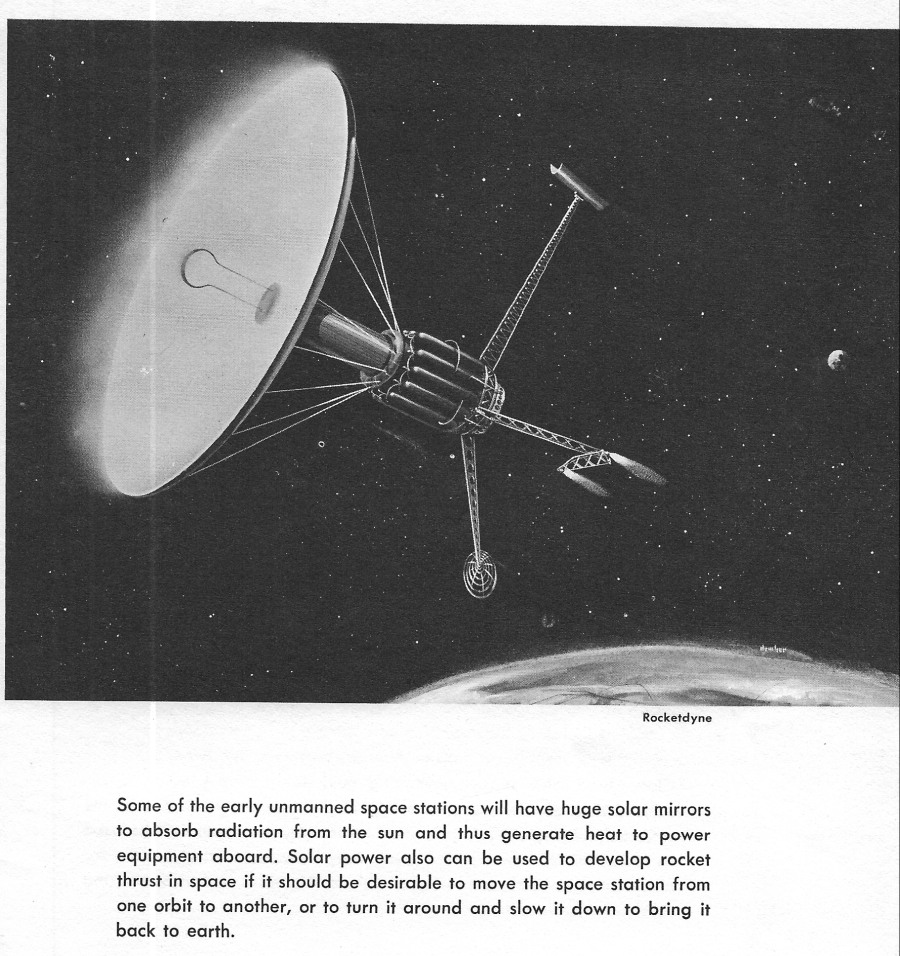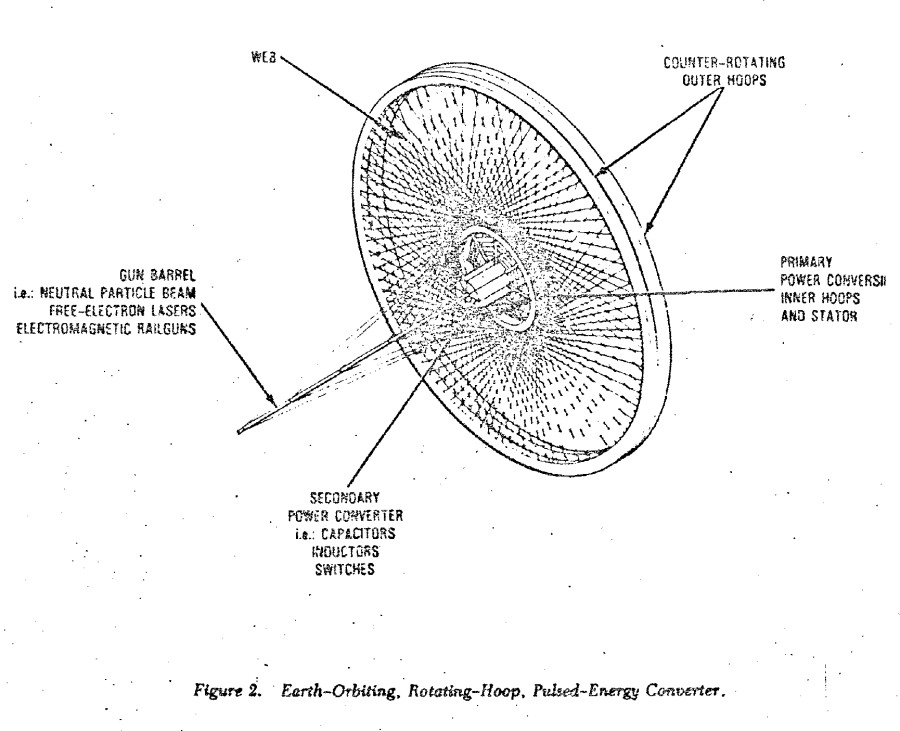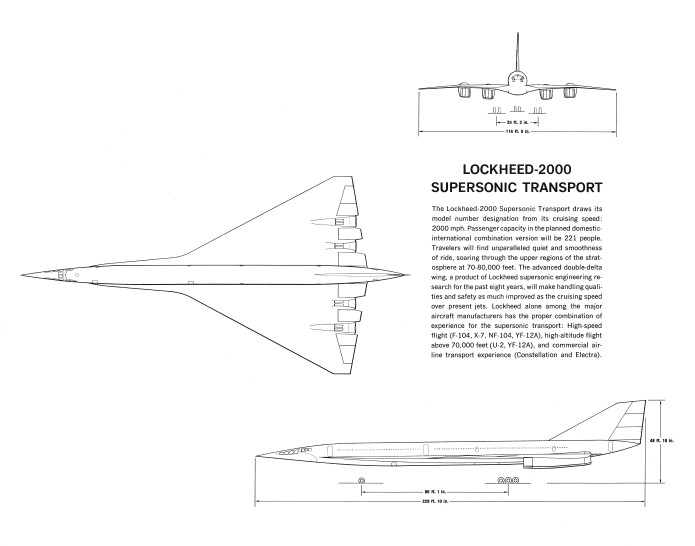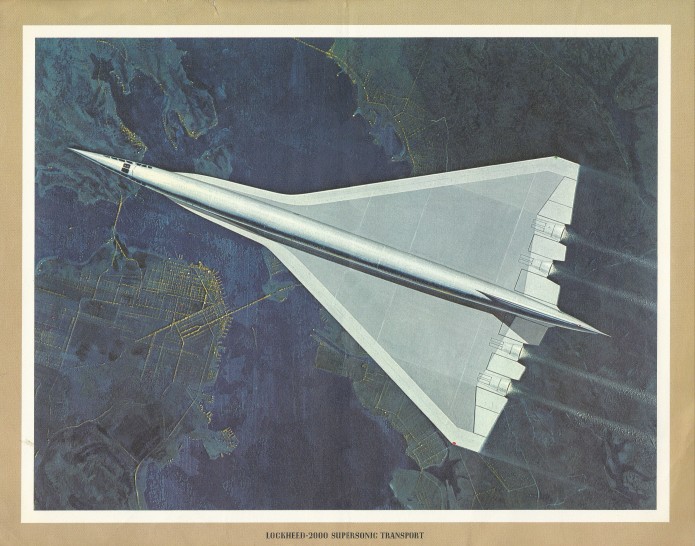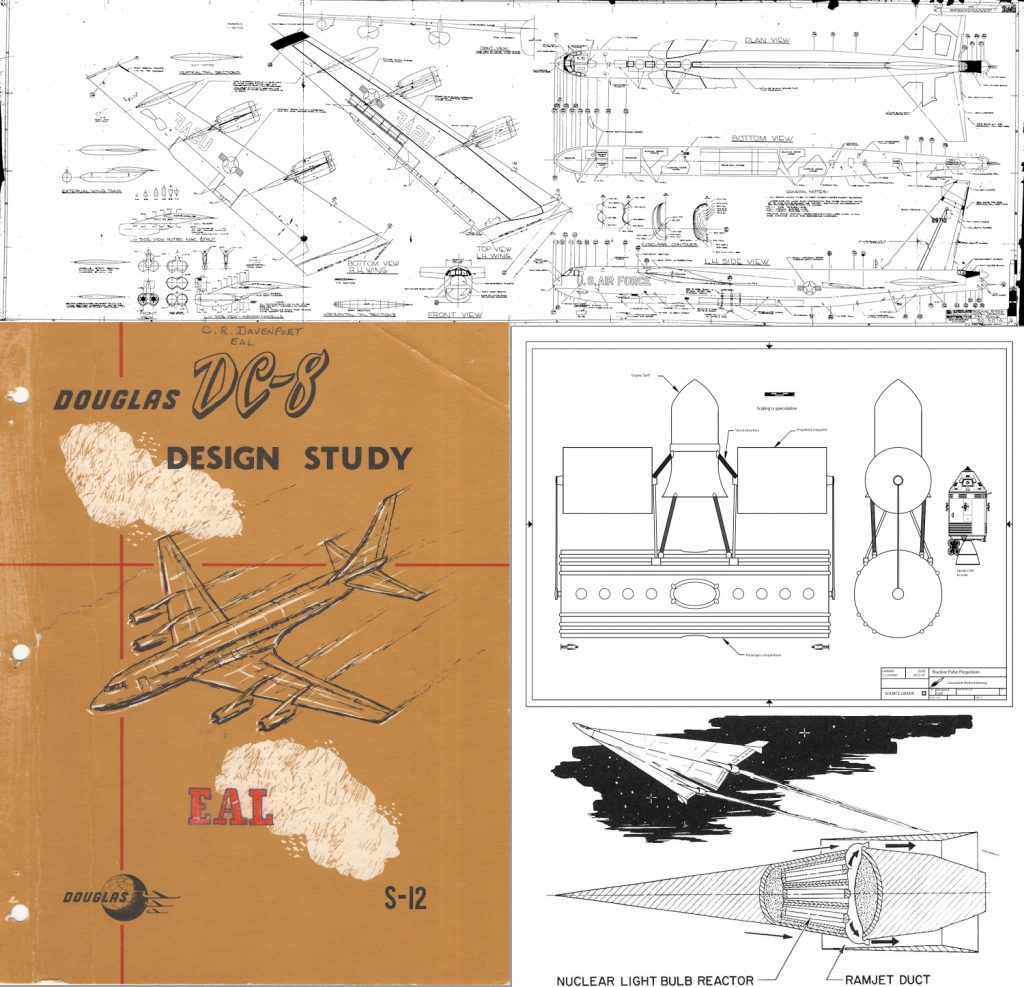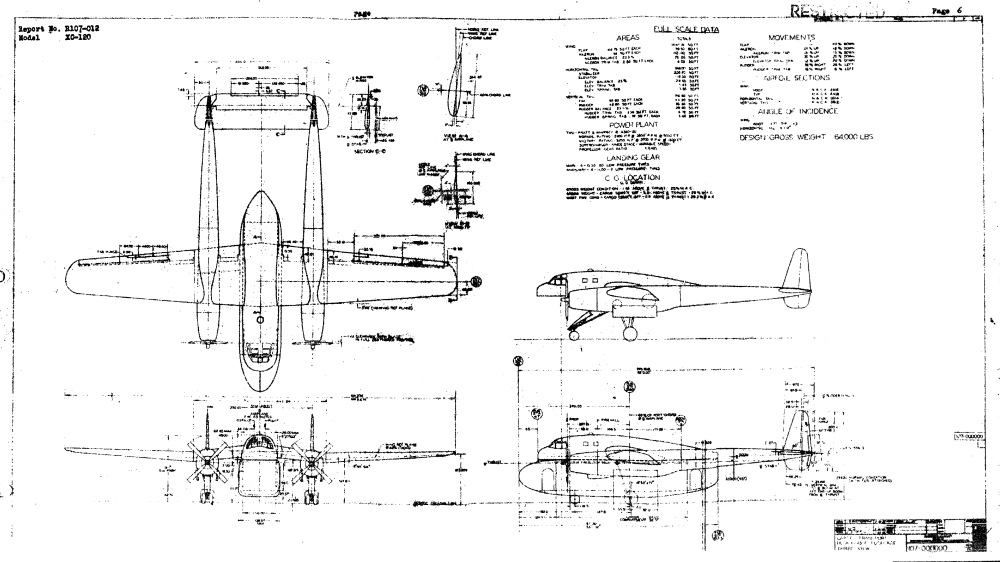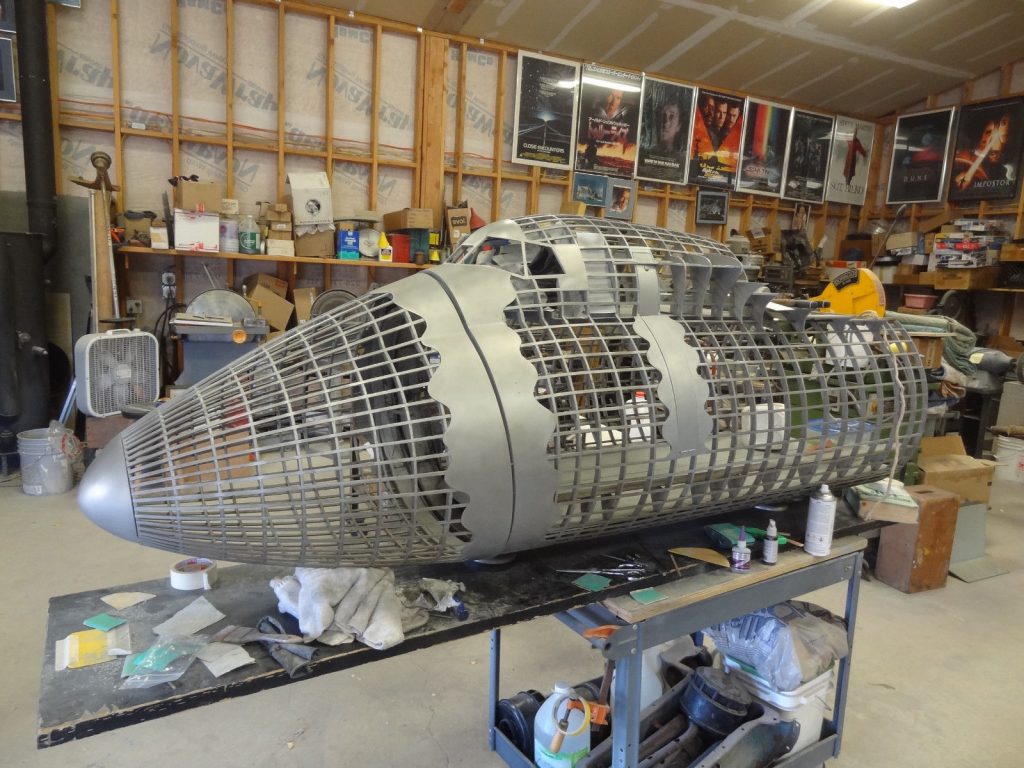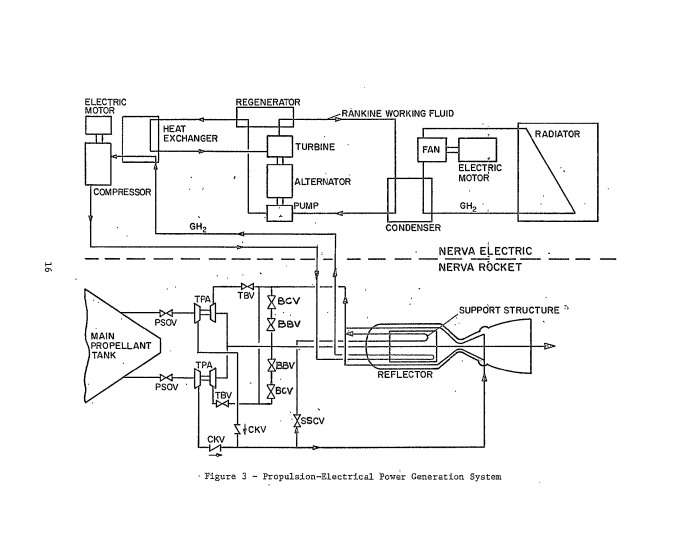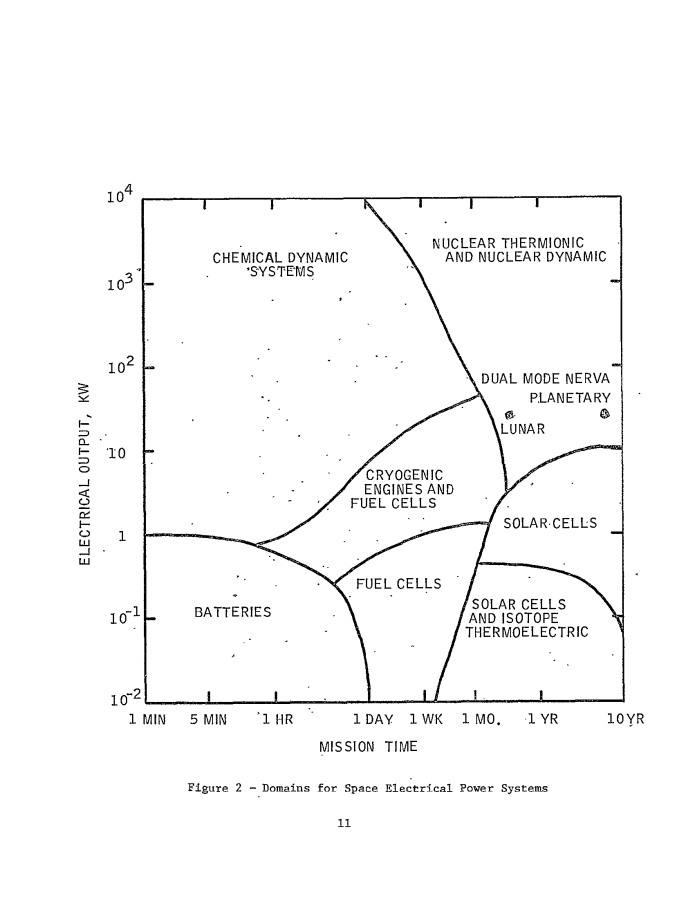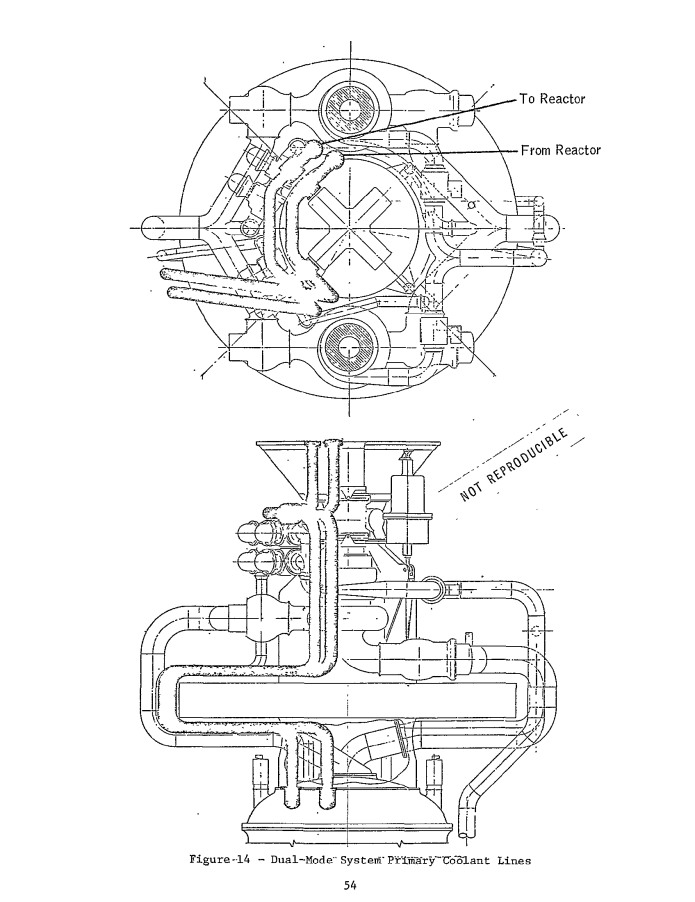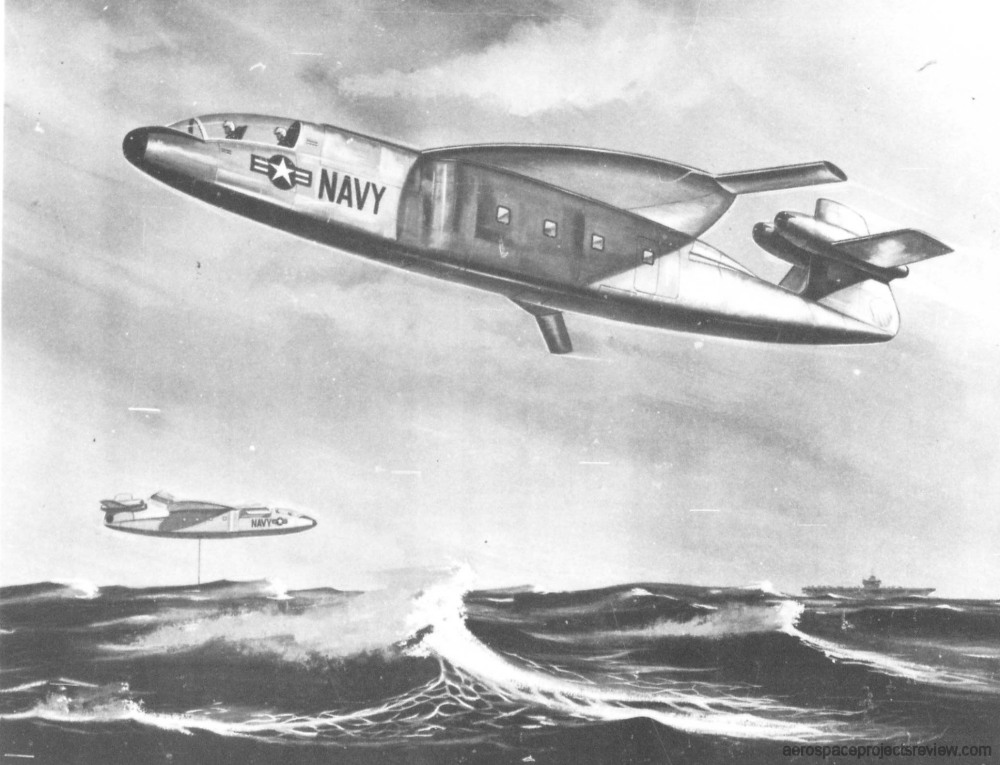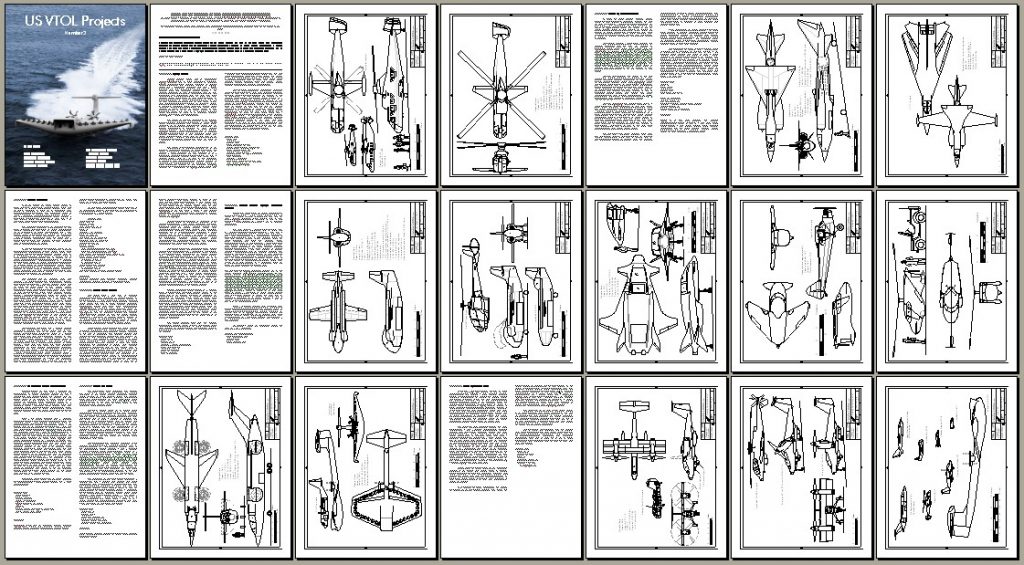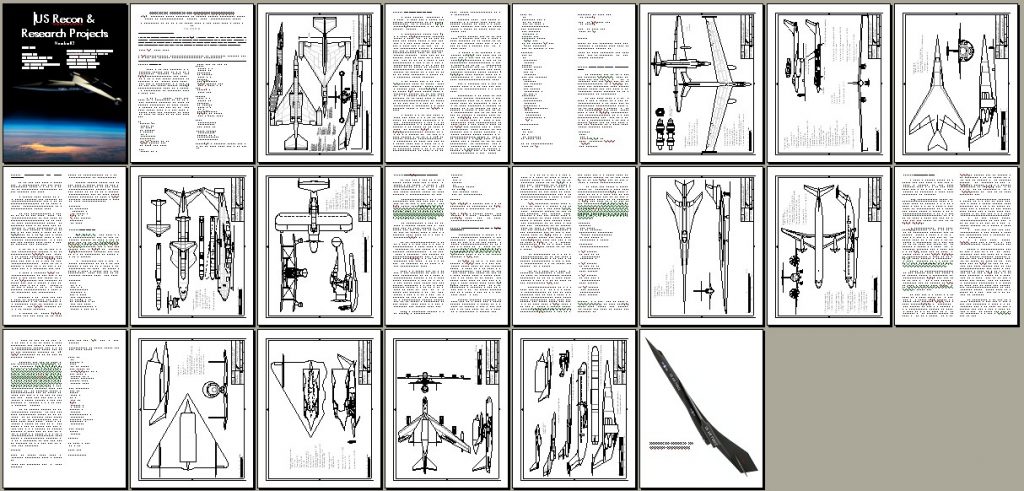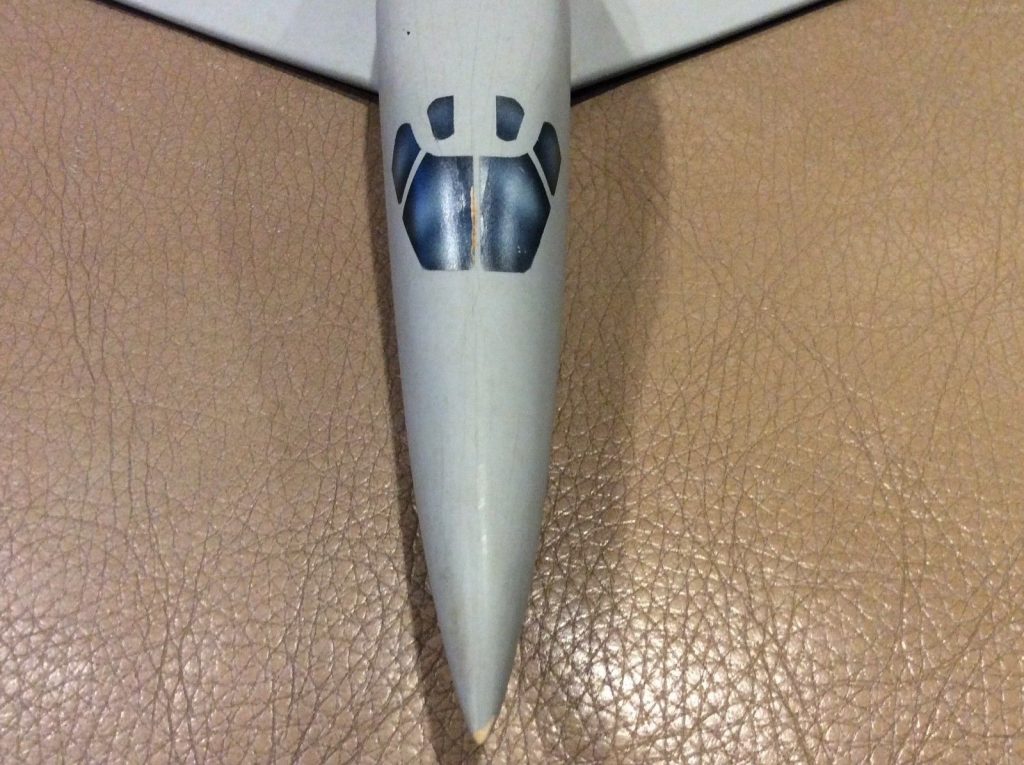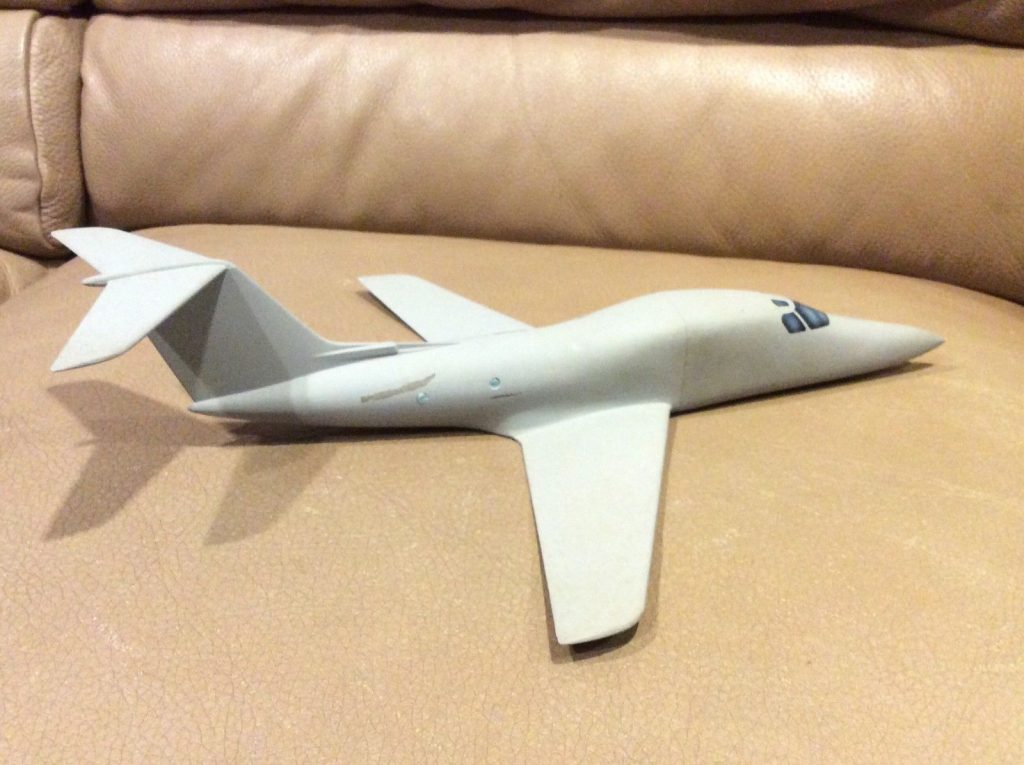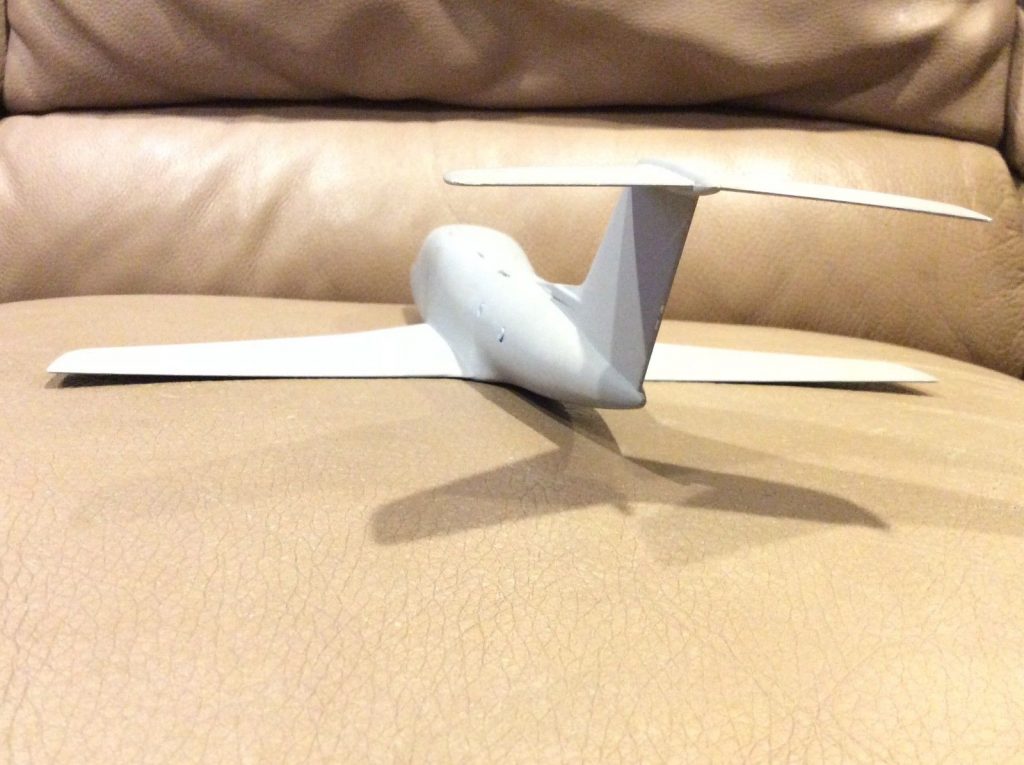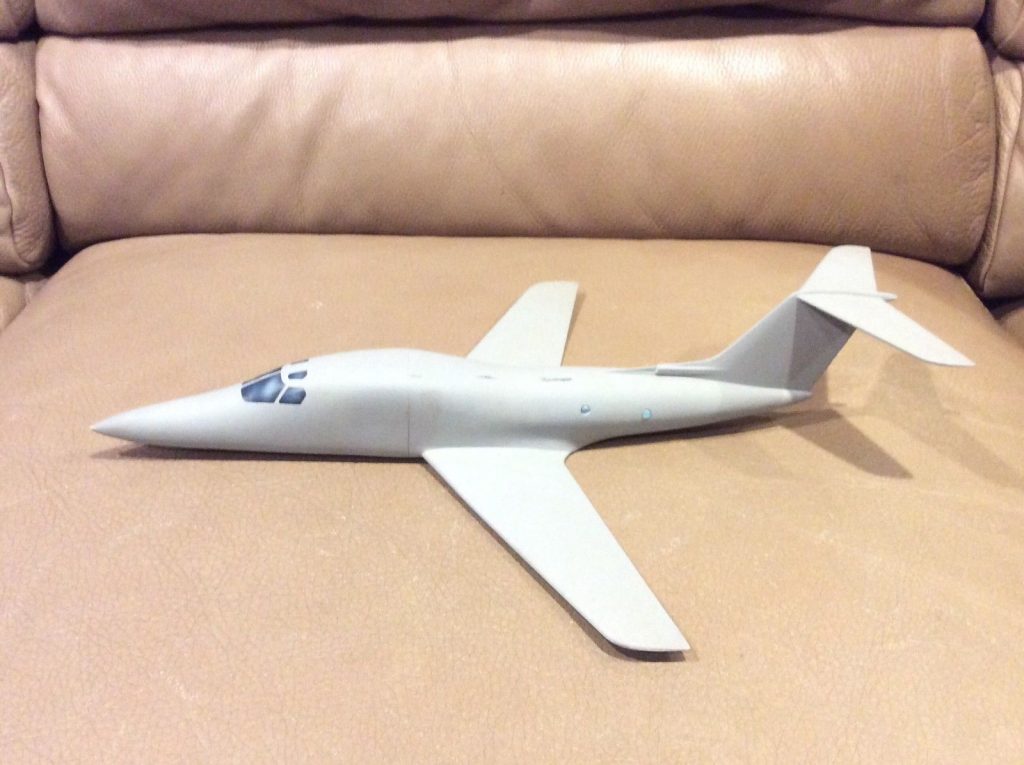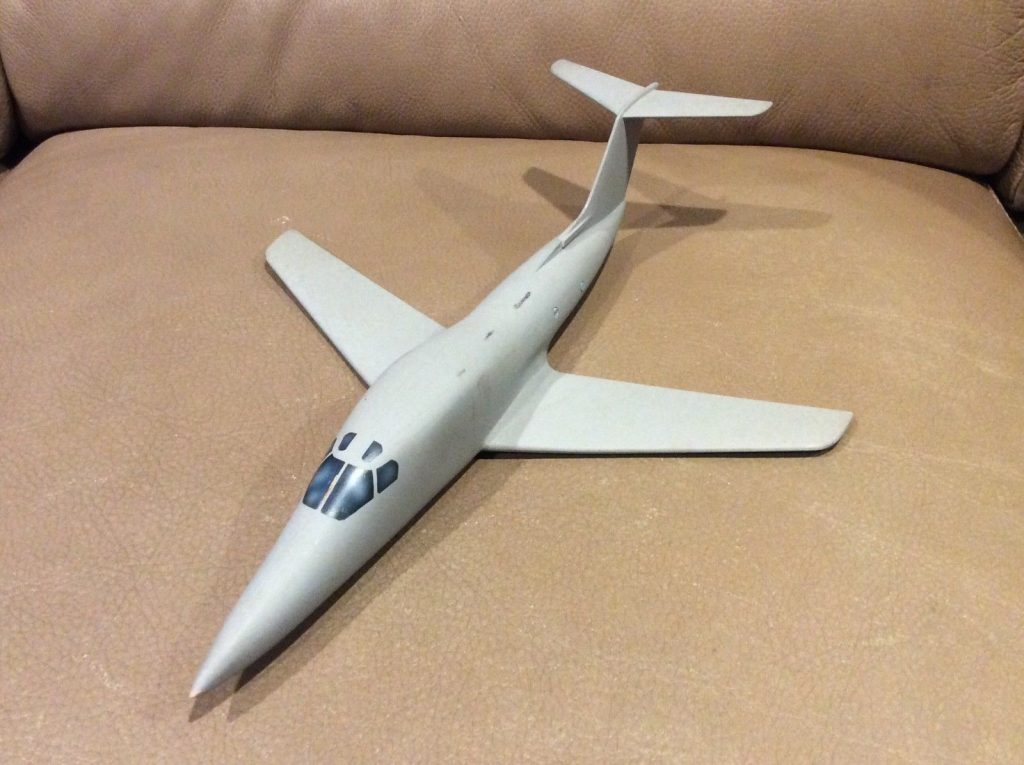A piece of late 1950’s promo art from Rocketdyne illustrating a spacecraft with a solar thermodynamic powerplant. This should not be assumed to be an actual design, but much more likely just more or less pure illustrative art.
The craft is shown with a great parabolic solar reflector, the sunlight heating an element at the focus. In an actual design, most likely a working fluid would be pumped through this and boiled, the resulting high pressure gas blowing past a turbogenerator and then into a heat exchanger or directly into a relatively vast radiator. The gas would be cooled back to liquid and recirculated. Note that no such radiator is in evidence. Sometimes early designs utilized radiators built onto the shadow side of the reflectors. The craft appears to be over Mars, based on the hints of canals that are kinda visible. The ship has a parabolic radio dish on a boom below; the upper boom would seem to hold a trough, likely a launching platform for a small probe rocket (another cliche in early spacecraft art). At the rear is a boom that appears to hold two banks of ion engines or some other electrical propulsion system. Oddly, the thrusters would seem to be held off well to the side of the craft, rather than actually firing through the centerline (unless that boom is supposed to be projected straight aft and mounted at one end of the bar holding the thrusters, thus putting the centerline of thrust back through the CG of the craft).
